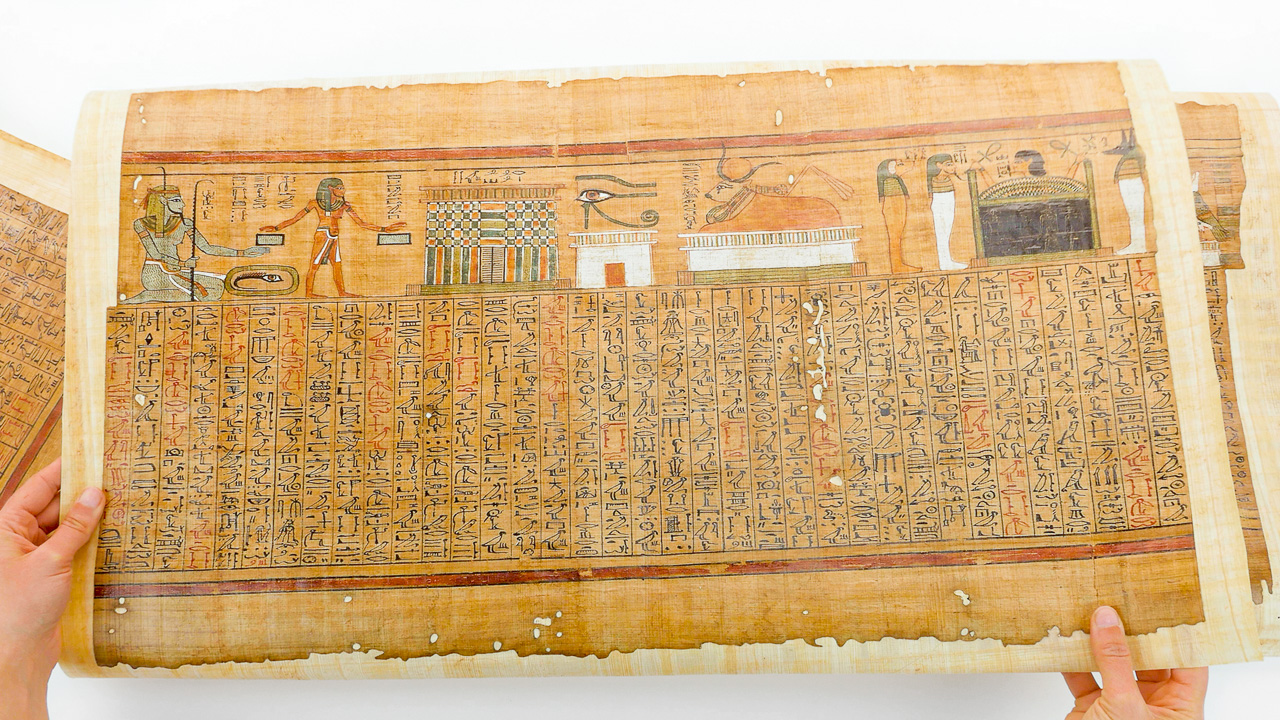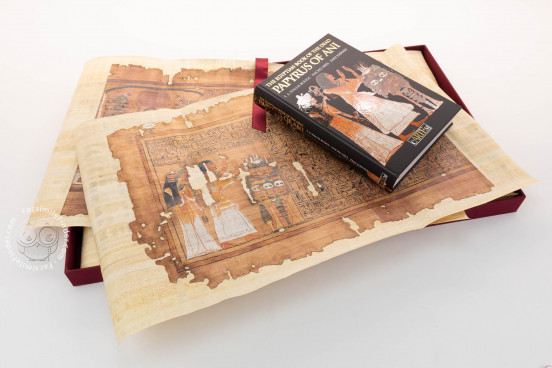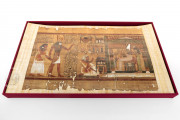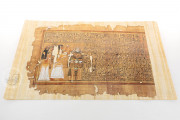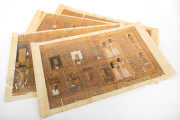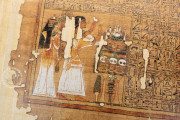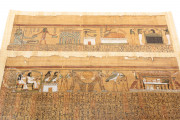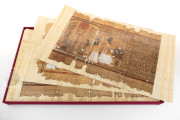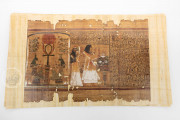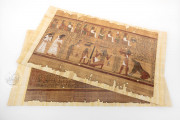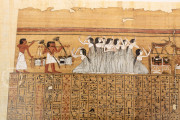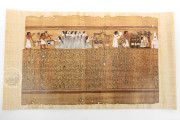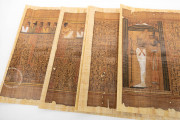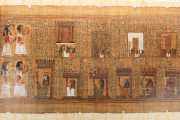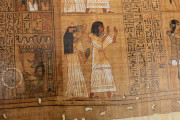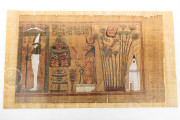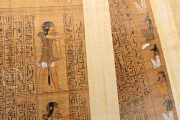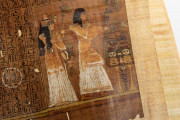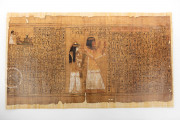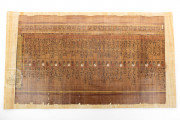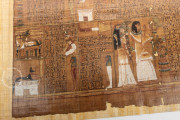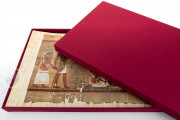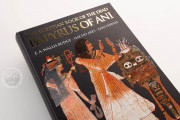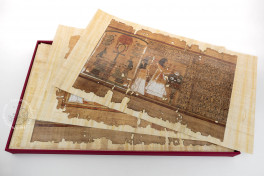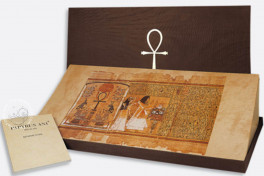The Papyrus of Ani is a copy of the famous ancient Egyptian Book of the Dead, a collection of spells, prayers, and incantations to aid in the transition of the spirit of the dead into the afterlife. This copy was created for Ani, a Theban scribe, during the Nineteenth Dynasty around the year 1250 BCE. It is written in cursive hieroglyphics and superbly illustrated with richly detailed paintings of the stages of the afterlife.
Among the numerous surviving copies of the Egyptian Book of the Dead, the Papyrus of Ani is considered the most magnificent in the quality of its lavish vignette paintings and the scope of its text.
The stunning pictures offer a glimpse into the life of ancient Egypt in its rendition of the "Field of Reeds," the awaiting paradise that reflects the living world, and into the complex and afterlife with its pantheon of gods rendering judgment and a menagerie of dangerous creatures. The Papyrus of Ani is an exquisite example of a key document in ancient Egyptian religion.
An Afterlife of Gods and Monsters
The Egyptian afterlife was a system of dangerous trials in which the deceased would be judged by their actions while living. The newly dead spirit would be taken into the presence of Osiris in his underground kingdom of Duat.
However, the journey was fraught with dangers including various gates guarded by supernatural monsters and real threats such as crocodiles. If these were passed, the spirit would stand in judgment in the beautifully illustrated Weighing of the Heart ritual.
Here, the heart, for Egyptians the place of the mind, is shown on a scale weighed against Maat, represented by a single ostrich feather. Failure was to be devoured by Ammit, a hybrid monster, but success meant the dead would join the gods in paradise.
Two Millennia of Books of the Dead
The papyrus scroll version of the Book of Emerging Forth into the Light, more commonly known as the Book of the Dead, developed from the Pyramid Texts of the Old Kingdom, a system of afterlife spells carved on walls within pyramids and tombs in 2400 BCE.
By the Middle Kingdom, these texts were written inside the coffins themselves and began to include pictures. In the New Kingdom, from ca. 1450 BCE, the spells were written on papyrus scrolls and the number of spells had grown dramatically. While some scrolls were simple, including few, if any, pictures, others, such as the Papyrus of Ani, were lavishly decorated.
Found in the Race for Ancient Artifacts
In the late nineteenth century, European museums were competing to build collections. The Papyrus of Ani was discovered in Luxor by individuals dealing in ancient artifacts to supply these museums.
Their collection was seen by the noted Egyptologist, and later Keeper of Egyptian and Assyrian Antiquities at the British Museum, Sir E. A. Wallis Budge. Budge purchased the scroll from these collectors but shortly afterward those men were arrested.
According to Budge, he arranged for his purchases to be surreptitiously removed from police custody. The scroll entered the collection at the British Museum in 1888 as “the largest, the most perfect, the best preserved, and the best illuminated of all the papyri.”
We have 3 facsimiles of the manuscript "Papyrus Ani":
- El Libro de los muertos (Papiro de Ani) facsimile edition published by CM Editores, 2018
- Der Papyrus Ani - Special Edition facsimile edition published by Akademische Druck- u. Verlagsanstalt (ADEVA), 1978
- Der Papyrus Ani - Standard Edition facsimile edition published by Akademische Druck- u. Verlagsanstalt (ADEVA), 1978

